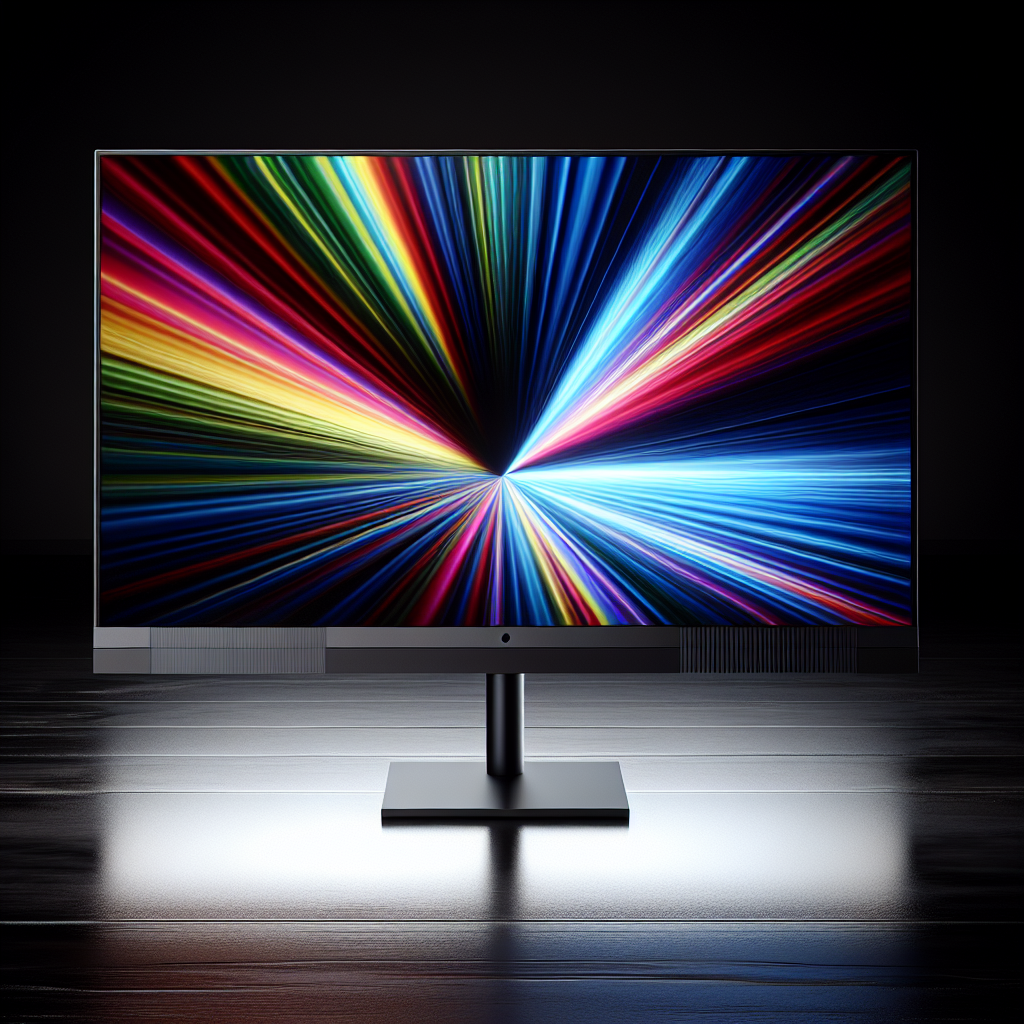Introduction to OLED Technology
In the world of display technology, OLED (Organic Light Emitting Diode) stands out for its exceptional capabilities, particularly its ability to deliver true black colors. Unlike conventional LCD (Liquid Crystal Display) screens, which rely on a backlight, OLED monitors use individual light-emitting diodes. This design allows for each pixel to turn on and off independently, achieving deeper black levels and an enhanced viewing experience.
Comparison of Display Technologies
To understand the advantages of OLED technology, let’s compare it with traditional LCD technology:
| Feature | OLED | LCD |
|---|---|---|
| Black Level Performance | True Black | Black with Backlight Bleed |
| Color Accuracy | Superior | Good |
| Viewing Angles | Wider | Narrower |
| Energy Consumption | Lower (for dark images) | Higher |
| Thickness | Thinner | Thicker |
Mechanism Behind True Black in OLED
The key to OLED’s true black performance lies in its unique construction. Each pixel in an OLED display is made of organic compounds that emit light when an electrical current passes through. Here’s a step-by-step breakdown of the process:
- No Backlight: OLED pixels emit their own light, eliminating the need for a separate backlight.
- Independent Pixel Control: Each pixel can turn off completely, resulting in absolute black when the pixel is off.
- High Contrast Ratio: The stark difference between the bright pixels and the completely off black pixels creates a high contrast ratio, enhancing the overall picture quality.
Advantages of OLED Monitors
OLED technology offers several benefits over traditional LCD screens:
True Black Levels
The ability to achieve true black sets OLED monitors apart, providing a more immersive viewing experience especially in dark scenes.
Enhanced Color Accuracy
OLED displays can produce a wider color gamut, leading to more vibrant and accurate colors.
Better Viewing Angles
Unlike LCD screens, which can suffer from color and brightness shifts at different angles, OLED monitors maintain consistency across a wide range of viewing angles.
Energy Efficiency
OLED screens can be more energy-efficient, particularly when displaying darker images, as individual pixels can be turned off.
Thinner and Flexible Designs
The absence of a backlight allows OLED monitors to be thinner and even flexible, paving the way for innovative design possibilities.
Common Applications of OLED Technology
OLED technology is used in various applications due to its superior performance:
Smartphones
Many high-end smartphones utilize OLED displays for their vibrant colors and energy efficiency.
Televisions
OLED TVs are popular among consumers who seek the best possible picture quality.
Computer Monitors
Professional graphic designers and gamers often prefer OLED monitors for their superior visual performance.
Wearable Devices
Smartwatches and other wearable devices benefit from OLED screens due to their thinness and low power consumption.
Challenges and Considerations
Despite its advantages, OLED technology also has some challenges:
Burn-In
OLED displays can suffer from burn-in, where static images can leave a permanent mark on the screen.
Cost
OLED monitors are typically more expensive to produce and purchase compared to LCD counterparts.
Limited Lifespan
Organic materials in OLEDs can degrade over time, potentially reducing the lifespan of the display.
Conclusion
OLED monitors can indeed display true black colors, providing a superior visual experience compared to traditional LCD screens. With their high contrast ratios, vibrant colors, and sleek designs, OLED technology represents a significant leap forward in display technology. However, potential buyers should be aware of the associated costs and limitations such as burn-in and lifespan. Overall, for those seeking the best in picture quality, OLED monitors are an excellent choice.

